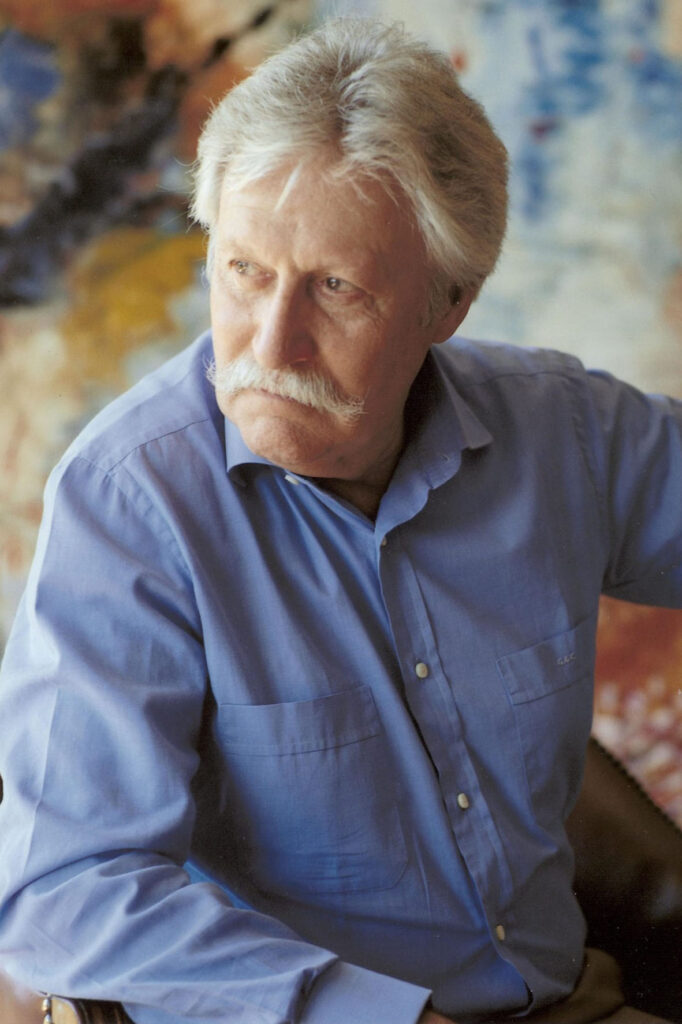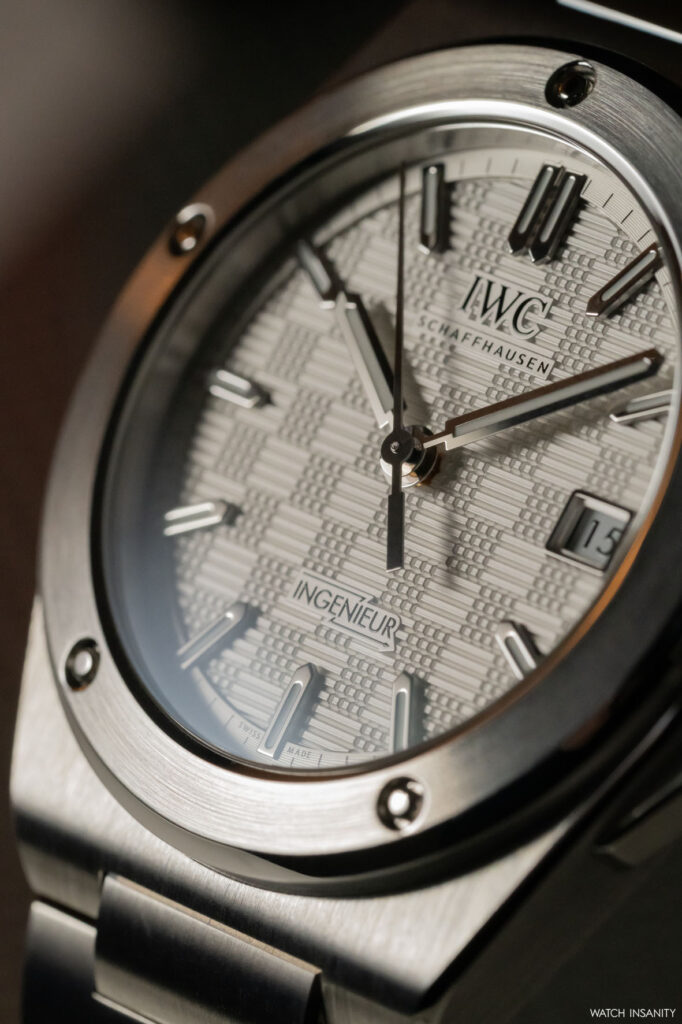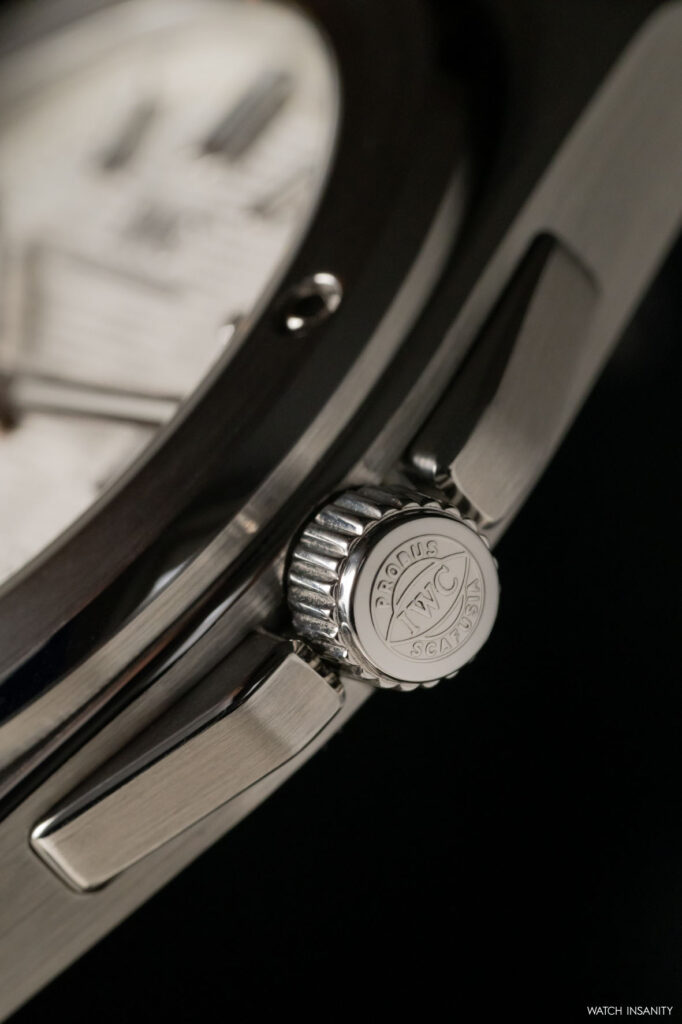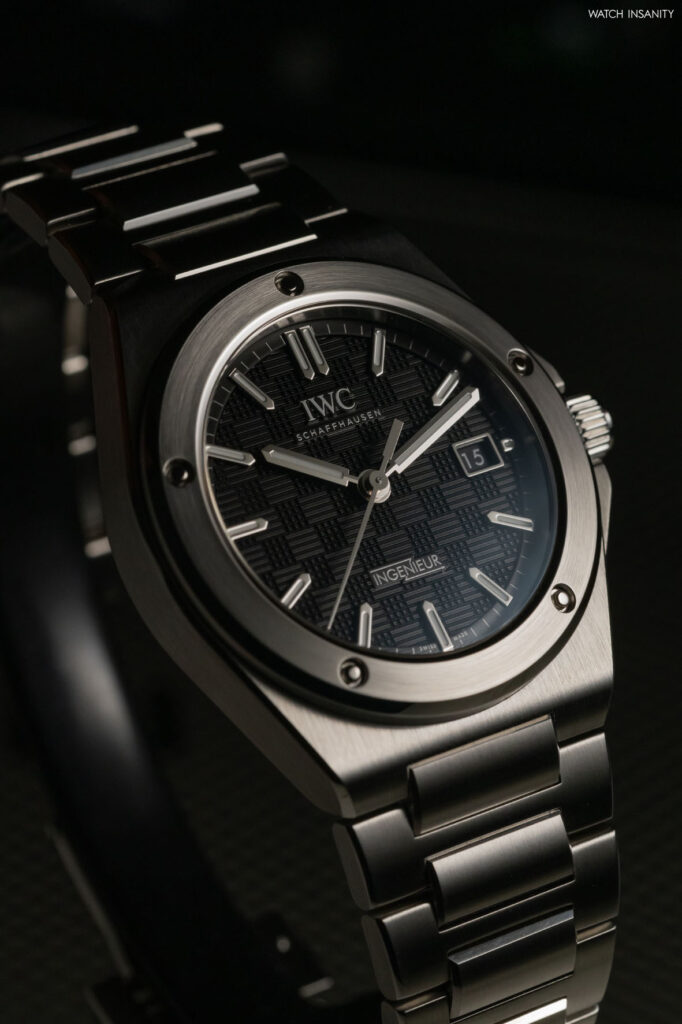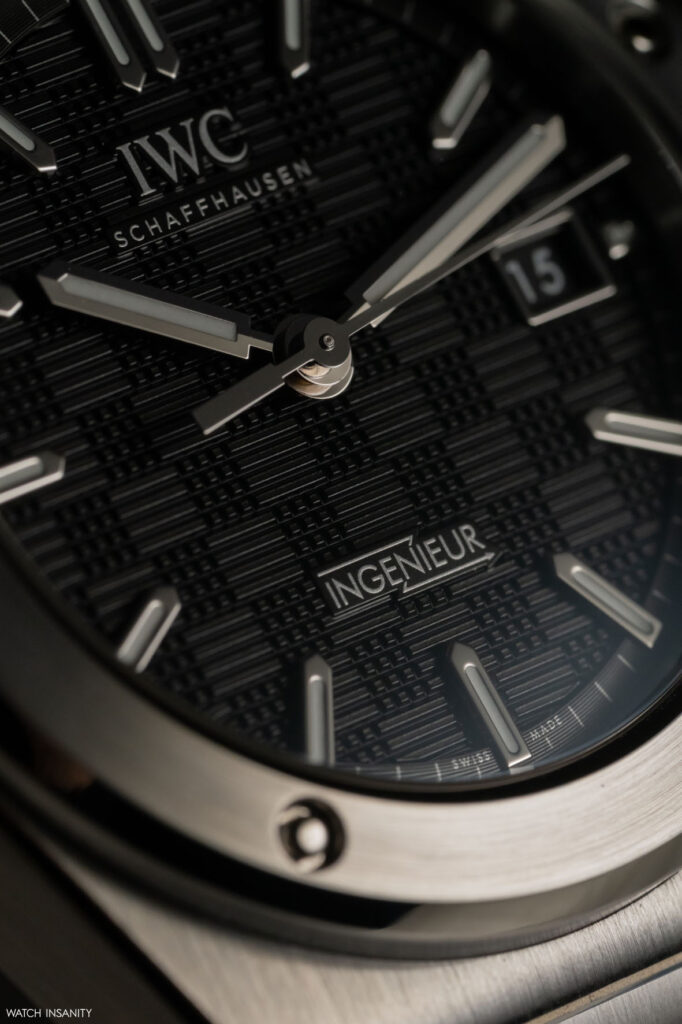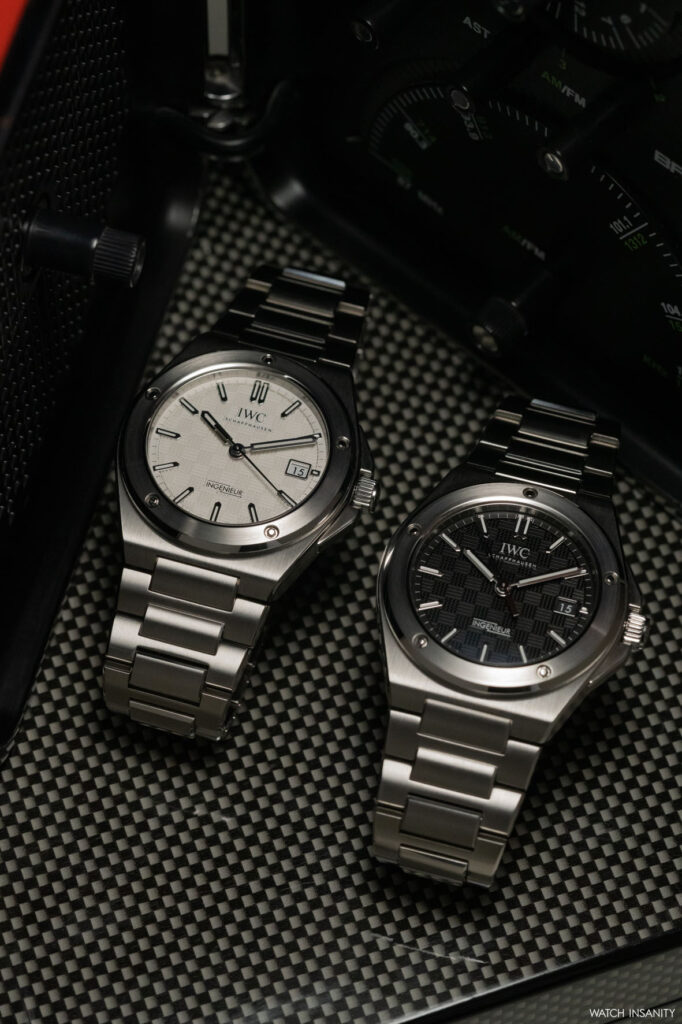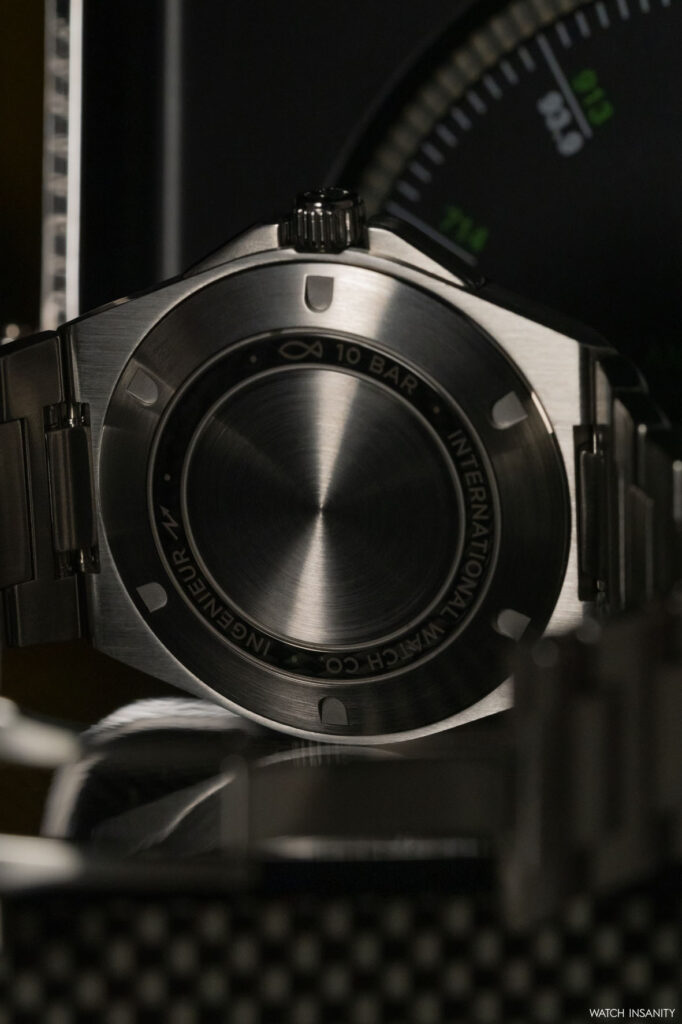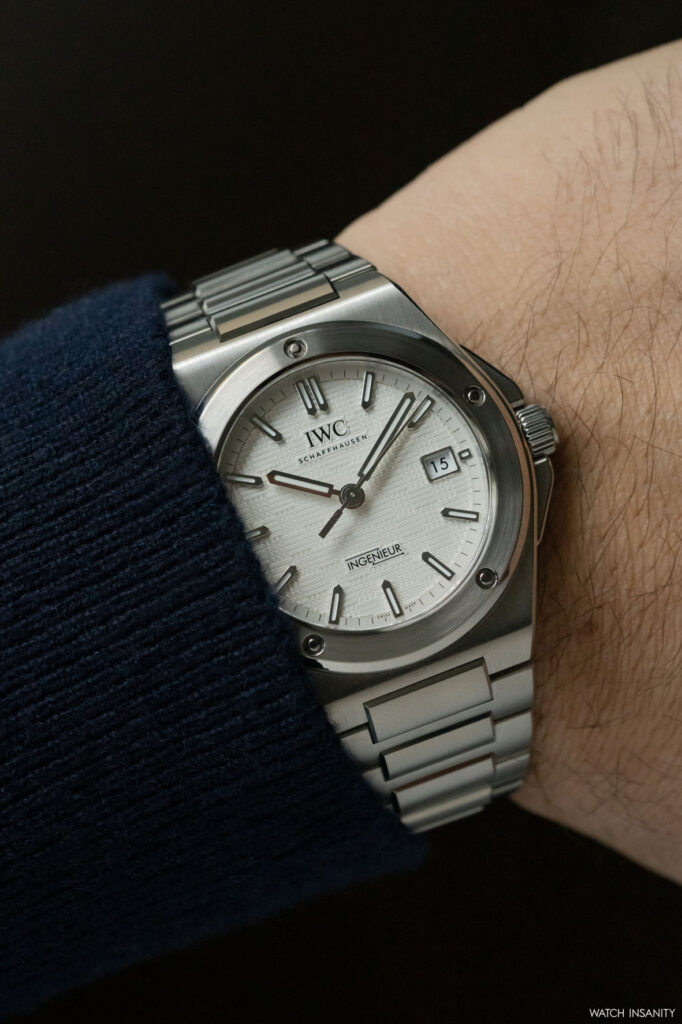IWC: Ingenieur Automatic 40
27 March 2023Few people can doubt that IWC’s Ingenieur is playing an important role in the history of contemporary watchmaking. Even fewer can deny that it is playing this role because it was born from Gerald Genta’s pencil. So, an icon. But even icons evolve and get modernized, so this 2023 IWC goes back to the collection to create the Ingenieur Automatic 40. A watch that owes a lot to Gerald Genta, and which pays homage to his genius. But let’s take a step back in history first.
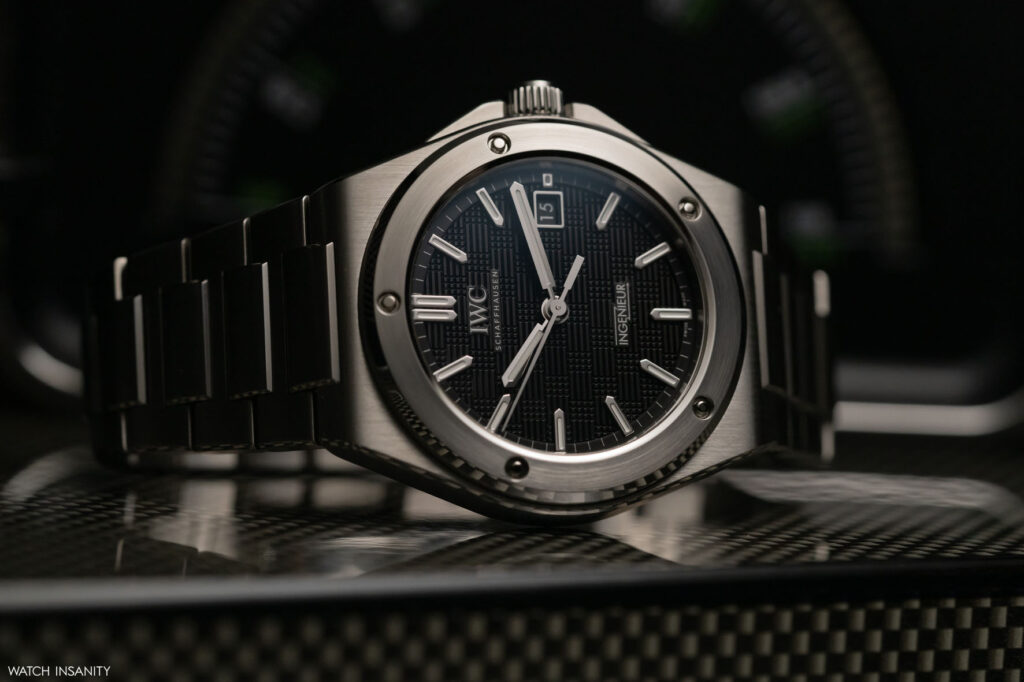
A BRIEF HISTORY OF THE INGENIEUR
IWC’s Ingenieur was born in the 1950s, a very dynamic period for the Schaffhausen brand. During that decade, the then technical director Albert Pellaton completed the development of the manufacture’s first automatic movement. Its winding mechanism used the oscillating weight’s slightest rotations in both directions to wind the mainspring. This development led, in 1955, to the birth of the Ingenieur, the reference 666, the first antimagnetic IWC wristwatch for civilian use.
The watch was antimagnetic thanks to a soft iron inner case which protected the movement. It worked like a Faraday cage, deflecting the magnetism around the movement and preventing the sensitive components inside from becoming magnetized and affect the watch’s accuracy. A tool-watch for professionals who worked in environments exposed to strong magnetic fields. Nothing new for IWC, which had developed this technology a few years earlier for the Mark 11.
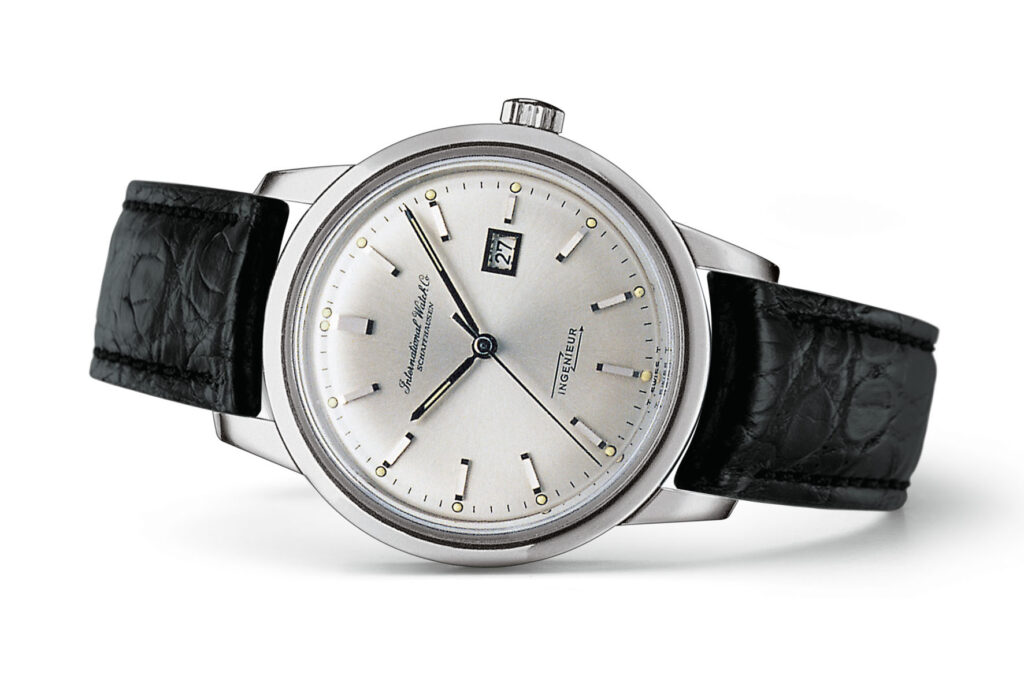
A tool-watch for professionals, yes, but also rather anonymous. The ref. 666 had an inconspicuous round case that characterized it for over a decade, and which was also found in the following ref. 866 of 1967. Something, however, was about to change.
GERALD GENTA’S SIGNATURE
The late 1960s brought a wave of new watchmaking ideas that would find their full expression in the early 70s. By the end of the 1960s, the idea of creating a “new, heavy Ingenieur Steel model” was already circulating among the IWC management. From their meetings’ minutes, it appears that this project officially started on August 1, 1969.
A project that aimed to integrate into the watch an advanced shock protection system for the movement. It didn’t prove easy: the prototypes created between 1970 and 1971 failed the rigorous impact tests they were subjected to. It wasn’t just a problem of technology, but also of case design. That’s why IWC looked for an external designer to entrust with the project and turned to the best, Gerald Genta.
At the time, Genta was a freelance and had already worked for IWC in 1967, designing a steel chronograph that never saw the light. Genta delivered his project to the maison in 1974: a watch with an integrated steel bracelet and an impactful screw-on bezel with five screws, which from functional elements became design elements.
THE CHOICE OF STEEL
The choice of steel was not accidental, but influenced by the economic situation of the time. It was in the 1970s, in the midst of the “quartz crisis” – when the Swiss watch industry was threatened by the wave of cheap timepieces from the Far East that flooded the international market. Along with that, the dollar’s exchange rate plummeted and the price of gold climbed to ever-new heights. And IWC’s collections consisted mainly of gold watches. That was a problem.
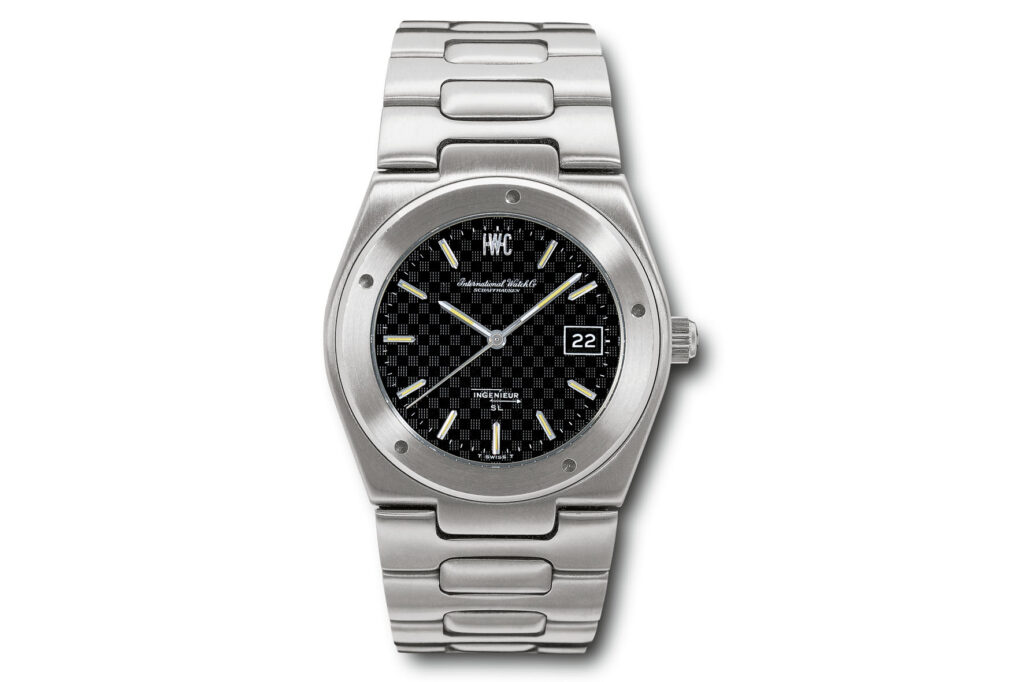
The solution found by the then marketing and sales director Hannes Pantli was to significantly expand the brand’s steel offer. Thus, the IWC collection – commonly referred to as the SL – was born, including several luxury sports watches in steel. Among them, the Ingenieur SL ref. 1832, launched in 1976, which became the spearhead of the collection. Its price was considerable for those years and for the fact that it was made of steel: 2,000 francs.
The 40 mm case defined the watch’s nickname, Jumbo, as much smaller dimensions were more popular at the time. Shock protection was ensured thanks to rubber buffers on which the automatic caliber 8541 was mounted. There was also a soft iron inner case which protected the movement from magnetic fields of up to 80,000 A/m. As per Genta’s design, there was the screw-on bezel with its five screws, the dial had an original pattern, and the integrated bracelet had H-shaped links.
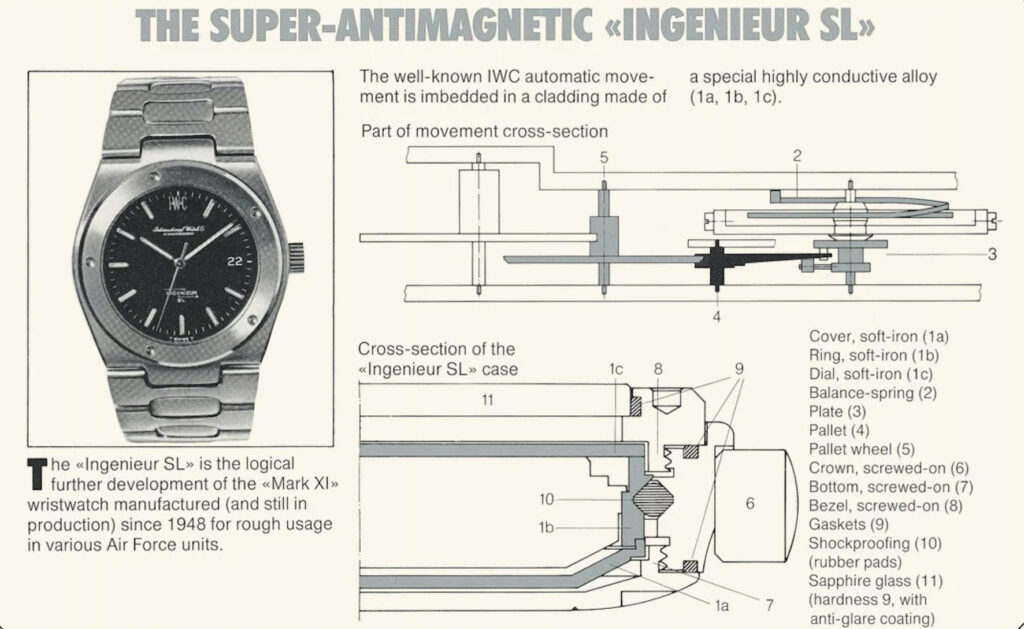
In the following years, IWC also issued the Ingenieur SL in steel-gold or gold with quartz calibers. Despite its innovative design (or perhaps because of it…), the watch did not enjoy commercial success; in those years, customers were looking for flat quartz timepieces more than bulky ones like the Ingenieur SL. From its launch until 1983, just little more than 1000 were sold. As often happens, failures of the past help today’s successes: the ref. 1832 is one of the most sought-after watches in IWC history.
IWC INGENIEUR AUTOMATIC 40: THE PRESENT
That it will become one of its most sought-after pieces is what the brand hopes for the new Ingenieur Automatic 40. As we wrote above, the watch owes much to Gerald Genta’s and the Ingenieur SL’s legacy, brought into the present time. Because as IWC CEO Chris Grainger-Herr said, “the new Ingenieur Automatic 40 is a versatile luxury sports watch for the 21st century.”
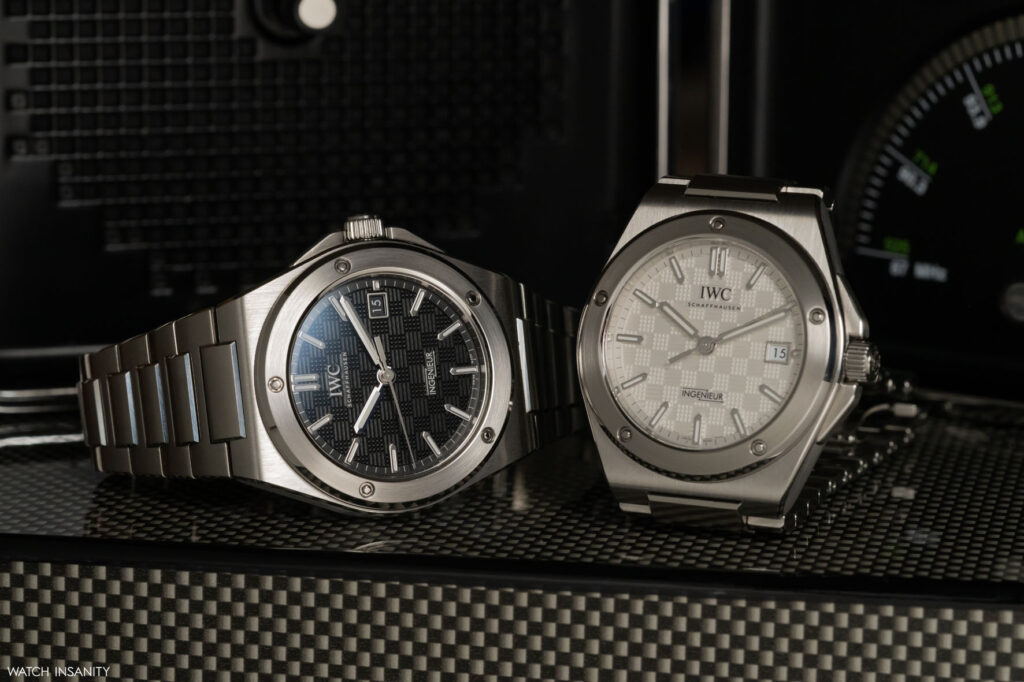
You can understand this at first sight. The brand’s designers have improved and refined the case’s overall dimensions to favor the ergonomics of the Ingenieur Automatic 40. The combination of the 40 mm diameter and the 45.7 mm lug-to-lug distance improves the wearability of the timepiece even on thinner wrists. Its thickness of 10.8 mm helps those who like to wear it under a shirt cuff.
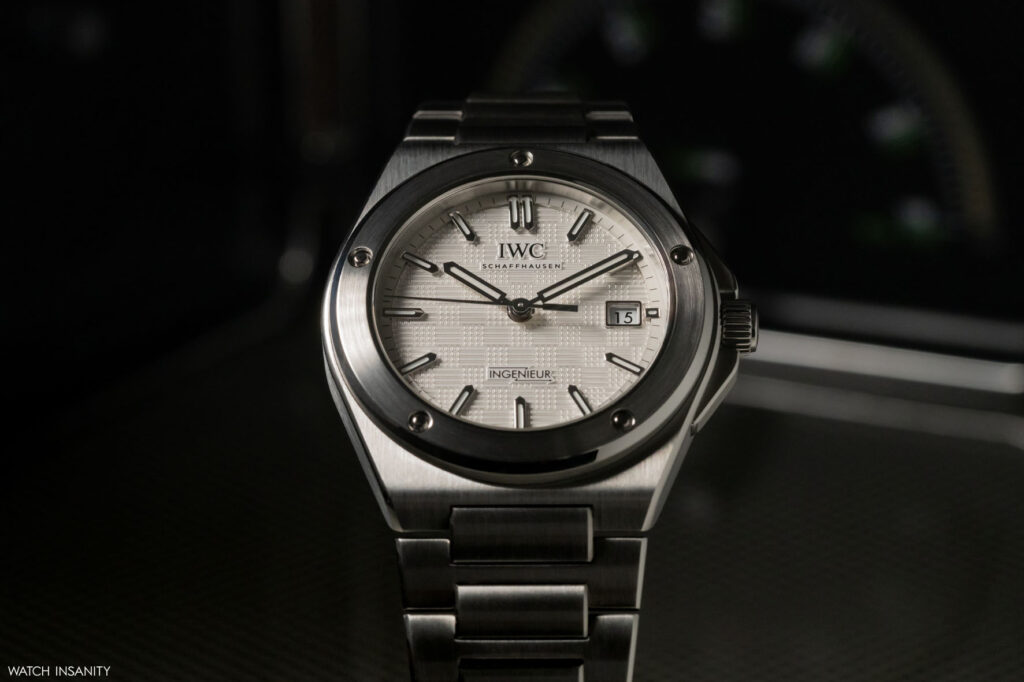
Similar work was done on the lugs. While the Ingenieur SL from the 1970s had nose-shaped horns, the new Ingenieur Automatic 40 features a newly engineered middle-link clamp that helps to better enwrap the wrist. The curved casing ring further improves the ergonomics of the case.
THE CASE AND THE BRACELET
The case is not only comfortable, but also excellently finished. The Ingenieur Automatic 40 features a high level of detail and finish. The case, bezel, and bracelet are elaborately finished using a combination of polished and satin-finished surfaces giving the watch a nice dynamism depending on where the light hits it. A newly designed crown protection further highlights the timepiece’s sporty character, accentuating its robustness.
The work done on the bracelet, with the recognizable H-links, is interesting. The upper parts of the bracelet contain closed links without pins, accentuating the outstanding craftsmanship of the watch. The integration of an elaborately finished butterfly folding clasp highlights the beauty and thinness of the H-link bracelet.
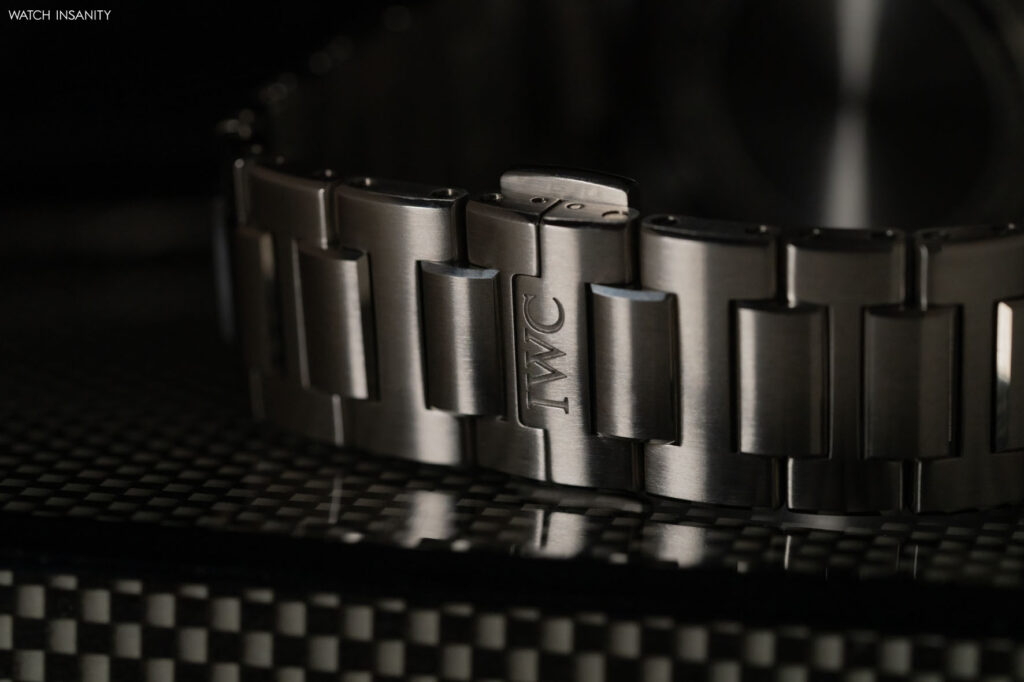
THE BEZEL AND THE DIAL
One of the watch’s trademarks since the Ingenieur SL is the five-screw bezel which was screwed onto the case ring. In the 1976 timepiece, the screws ended up in a different position on each watch. With the Ingenieur Automatic 40, five screws secure the bezel to the case. The screws now have a technical function and, as a result, are always in the same position.
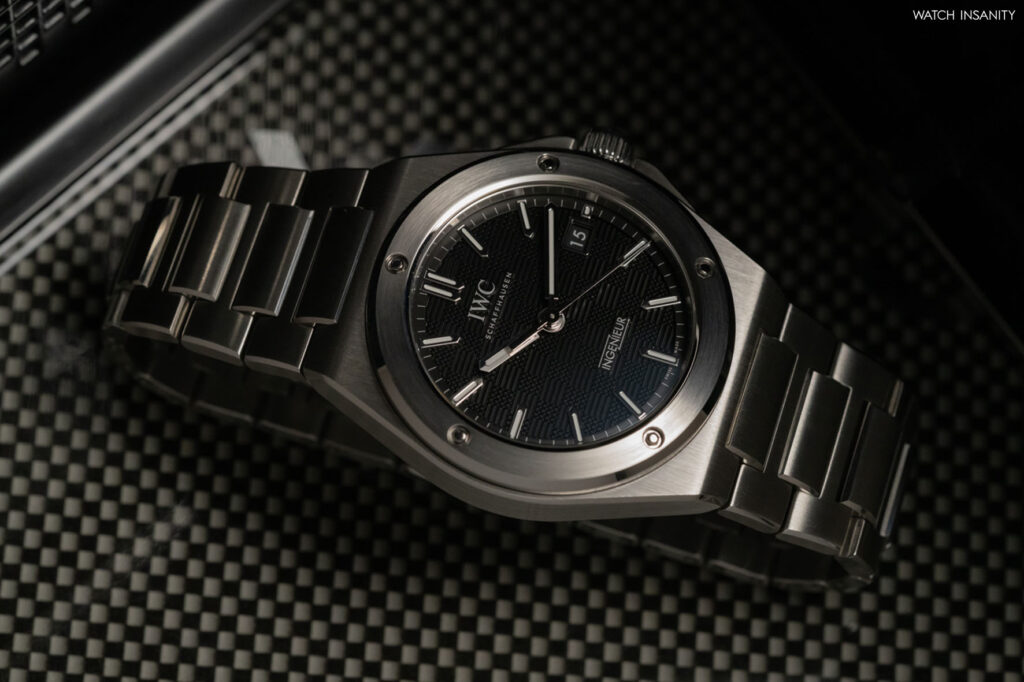
In addition to the bracelet and the screwed bezel, the main feature of the first Ingenieur was the particular workmanship of the dial. On the new watch, the dial features a distinctive “Grid” structure, creating a balance with the technical and very sculptural case design. Consisting of small lines offset by 90 degrees to each other, it is stamped into the soft iron blank before it is galvanized. The Ingenieur Automatic 40 is available in three different dial colors: black, silver or Aqua, in shades of blue-green.
The baton indexes are applied, covered with luminescent material like the hour and minute hands. At 3 o’clock the date is framed by a steel profile, and the background of the date disc is in the same color as the dial for a homogeneous visual result.
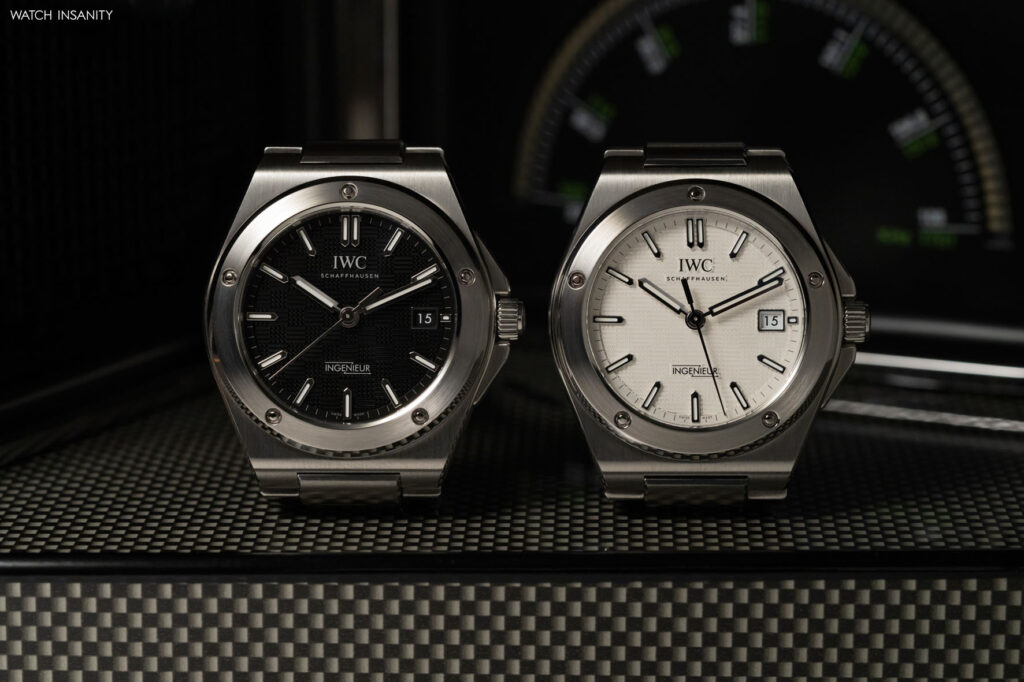
The steel case of the watch encloses the anti-magnetic soft iron inner case which protects the movement: the IWC 32111 self-winding caliber. Derived from the 32110, which comes from the ETA 2892-A2, it is also housed in some Aquatimer, Portofino and Pilot’s Watch references. It beats at 28,800 vibrations/hour, for a stunning power reserve of 120 hours.
Considering the fact that the watch costs 13,000 euros (there is also a titanium version for 16,200 euros), we think the best way to conclude the article is to use the words that Christian Knoop, IWC’s Chief Design Officer, spent on the Ingenieur Automatic 40: “It’s not every day that a designer gets the chance to work on reinterpreting an icon like the Ingenieur SL. Gerald Genta’s achievement deserves the utmost respect. We were aware of the enormous responsibility it entailed and proceeded very cautiously. We discussed every visible change intensively, and asked ourselves whether we could justify certain specific interventions. But when Evelyne Genta told us her husband would certainly have approved of the new Ingenieur Automatic 40, it felt like a well-deserved reward for all the passion and hard work that had gone into the project.”


